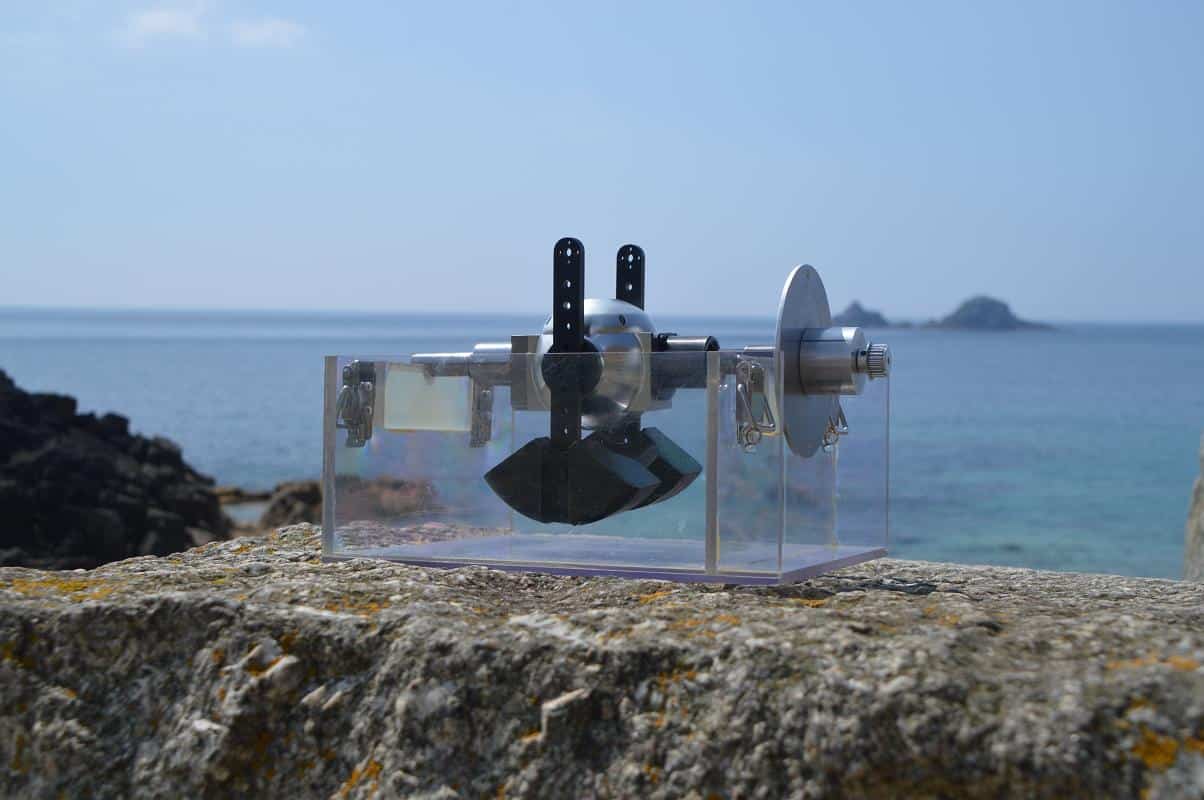
Schaeffler UK is providing invaluable engineering support to the development of a British-designed marine energy device that generates electricity from any form of movement.
Developed by Plymouth-based company WITT, the WITT (Whatever Input to Torsion Transfer) motion energy harvester uses two pendulums connected to a flywheel to generate electricity from movement in any direction. This movement causes the two pendulums to swing. The pendulums are attached to a shaft, which turns a flywheel in one direction. The flywheel is connected to a generator, which produces electricity. The principle behind the device is similar to that of a self-winding watch, in which a rotor on a pivot generates energy from the movement of its wearer. Effectively, this means the device is able to generate electricity from sea, river, tidal or wind energy, as well as from the movement of humans or animals.
WITT is currently developing a 200W marine version of the device, the marine WITT. In this version, the WITT energy device is fitted into a completely sealed 1.5m unit. The first working prototypes of the device were tested recently on a shaker table at Southampton University – the tests were deemed extremely successful. Sea trials will follow over the next six months.
Schaeffler UK is supplying a variety of bearings for the marine WITT. These include roller bearings, ball bearings and one-way clutches. As Stewart Davies, principal applications engineer at Schaeffler UK, stated: “There are approximately 25 different bearing locations on the 200W marine WITT device, some of which are bespoke in order to meet the restricted design envelopes in the application.”
As the marine WITT is a totally enclosed, sealed unit, Schaeffler UK was able to select standard bearings for most locations, which helped to minimise the cost per kW of the device.
WITT involved Schaeffler early in its product design phase, which enabled Schaeffler to maximise added value. As Mairi Wickett, CEO and founder of WITT, said: “We originally met Schaeffler in 2015 at a Proving Factory event and were impressed by its knowledge and application experience in wind, tidal and wave energy. Engaging with Schaeffler’s engineers early in the design process has made all the difference, as we’ve benefited from their expert engineering advice and technical support, as well as their assistance in bearing selection and design optimisation of the WITT transmission system. Schaeffler’s support on this project has been invaluable.”
To help optimise the design, Schaeffler used its in-house developed design and calculation software, Bearinx to model the complete transmission system, including gears, bearings, flywheel, one-way clutches and shaft. This enabled the loads on the bearings to be calculated. In turn, this helped to optimise the design of the WITT transmission system and enabled the most appropriate bearings to be selected for each location.
The marine WITT energy device could provide power for a variety of offshore applications including large-scale survival units, desalination plants and offshore fish farms. As well as large-scale renewable energy applications, smaller, grapefruit-sized 5W versions of the technology could be fitted to the backpacks of explorers or armed forces troops to generate energy to power their portable equipment as they walk or climb, allowing them to remain in the field for longer periods.










Simulations show Optimal Design for Bladeless Wind Turbines
"an 80cm mast" Really? I'm short but that's only half my height! Do they mean 800cm?